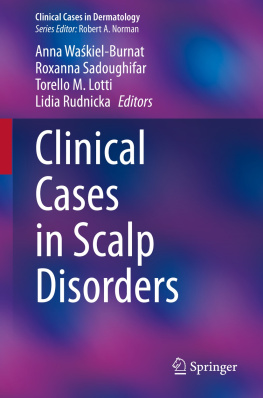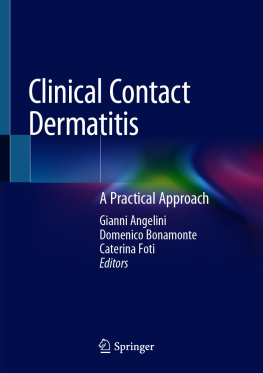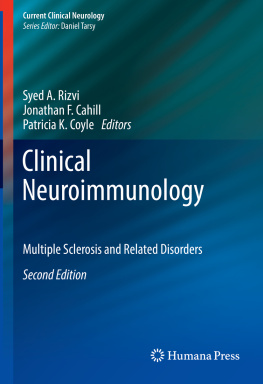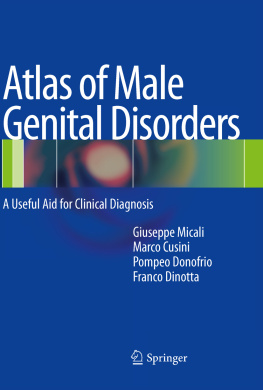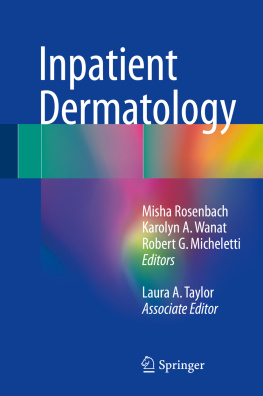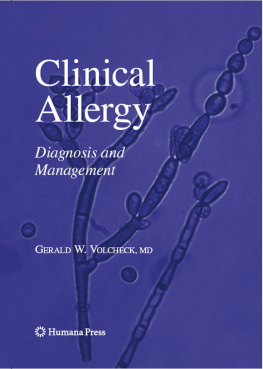Editors
Torsten Zuberbier , Clive Grattan and Marcus Maurer
Urticaria and Angioedema
2nd ed. 2021

Logo of the publisher
Editors
Torsten Zuberbier
Institute for Allergology, Charit Universittsmedizin, Berlin, Germany
Clive Grattan
St Johns Institute of Dermatology, Guys Hospital, London, UK
Marcus Maurer
Fraunhofer Institute for Translational Medicine and Pharmacology ITMP, Allergology and Immunology, Berlin, Germany
ISBN 978-3-030-84573-5 e-ISBN 978-3-030-84574-2
https://doi.org/10.1007/978-3-030-84574-2
Springer Nature Switzerland AG 2010, 2021
This work is subject to copyright. All rights are reserved by the Publisher, whether the whole or part of the material is concerned, specifically the rights of translation, reprinting, reuse of illustrations, recitation, broadcasting, reproduction on microfilms or in any other physical way, and transmission or information storage and retrieval, electronic adaptation, computer software, or by similar or dissimilar methodology now known or hereafter developed.
The use of general descriptive names, registered names, trademarks, service marks, etc. in this publication does not imply, even in the absence of a specific statement, that such names are exempt from the relevant protective laws and regulations and therefore free for general use.
The publisher, the authors and the editors are safe to assume that the advice and information in this book are believed to be true and accurate at the date of publication. Neither the publisher nor the authors or the editors give a warranty, expressed or implied, with respect to the material contained herein or for any errors or omissions that may have been made. The publisher remains neutral with regard to jurisdictional claims in published maps and institutional affiliations.
This Springer imprint is published by the registered company Springer Nature Switzerland AG
The registered company address is: Gewerbestrasse 11, 6330 Cham, Switzerland
Preface to the First Edition
Urticaria is one of the most common diseases in dermatology and allergy. Unlike many other diseases, the fleeting nature of the wheals makes first diagnosis by both patients and physicians in many cases easy. However, this only refers to the ordinary wheals. The disease itself is highly complex in nature, with a variety of clinical manifestations ranging from pinpoint-sized wheals to extensive angioedema. Complexity is also seen in the diversity of possible eliciting factors, the many different clinical subtypes, and the therapeutic responsiveness. Only in recent years has a better understanding of the diversity in the different subtypes led to new classifications and new evidence-based guidelines for diagnostics and management of the disease. While mast cells are in the center of most urticaria reactions, it is now clearly understood that the responsible mediators are not only limited to histamines. This book appears in a series of books by Springer. In 1986, the first monograph was edited by Professor Henz ne Chanewsky. Since then, two updates of the book have appeared in the German language with Professor Henz as the first editor and Torsten Zuberbier, J. Grabbe, and E. Monroe as the co-editors of the most recent English version, published in 1998. All these books have been written as a joint effort of Professor Henz together with her team at the Department of Dermatology at the Virchow Clinic, Humboldt University, Berlin. With the retirement of Professor Henz from her chair as head of the Department of Dermatology and novel guidelines available, the current group of editors has taken up the task of developing a completely new setup for the book. A group of internationally known authors in the field of urticaria have been asked to write different chapters, focusing on practical guidelines regarding diagnosis and therapy. This book is designed to be a useful reference for dermatologists, allergologists, pediatricians, and practitioners in general medicine, laying out clear-cut standard operating procedures on how to manage this disease efficiently.
Torsten Zuberbier
Clive Grattan
Marcus Maurer
Berlin, Germany Norwich, UK Berlin, Germany
Preface
In the 1998 edition, it was stated that urticaria is one of the most common dermatological and allergological cutaneous conditions and, compared to other dermatoses, it is usually recognized easily by patients and physicians alike. Nevertheless, urticaria is highly complex regarding its eliciting causes, its clinical manifestations, and therapy.
All of this remains true 23 years later. Urticaria continues to be a highly complex disease and is heavily researched. We still do not understand the underlying pathomechanisms and eliciting factors as much as we would like to, but unlike in the 1990s, when few people were interested in this disease, we are now in the good position that urticaria has come into the focus of many clinicians, researchers, and the pharmaceutical industry. We are also in the good position that we have global guidelines, and many advances have been made in the management of chronic urticaria. Today, we have reliable tools to measure patient-related outcomes to better monitor disease activity, and impact and treatment options have improved considerably. We now have a licensed biological, omalizumab, available for the treatment of chronic spontaneous urticaria, and many new trials are ongoing for further treatment options. When in the 1980s, a famous New York dermatologist stated that he would rather have a lion than a patient with chronic urticaria walk into his office; this is surely no longer any physicians wish.
Urticaria by definition is a disease characterized by the sudden appearance of wheals, angioedema, or both, and the unpredictable occurrence of symptoms is a factor, which has a high impact on the quality of life of our patients. The best support for them is a knowledgeable physician.
This book summarizes in a comprehensive and easy-to-follow approach the current knowledge on urticaria as well as tips and tricks for better treating our patients.
Torsten Zuberbier
Clive Grattan
Marcus Maurer
Berlin, Germany Norwich, UK Berlin, Germany
Contents
M. Greaves and Torsten Zuberbier
Clive Grattan and Martin K. Church
Torsten Zuberbier
Karsten Weller
Torsten Zuberbier and Zuotao Zhao
Dorothea Terhorst-Molawi and Marcus Maurer
Pavel Kolkhir and Marcus Maurer
Sabine Altrichter , Markus Magerl and Martin Metz
L. Bouillet
Torsten Zuberbier , Marcus Maurer and Clive Grattan
Martin K. Church
Torsten Zuberbier , Tamara Drr , Clive Grattan and Marcus Maurer
Clive Grattan , Torsten Zuberbier and Marcus Maurer
Moshe Ben-Shoshan and Petra Staubach
Emek Kocatrk , Zuotao Zhao and Ana M. Gimnez-Arnau
Contributors
Sabine Altrichter
Institute for Allergology, Charit Universittsmedizin, Berlin, Germany
Department of Dermatology and Venerology, Kepler University Hospital, Linz, Austria



